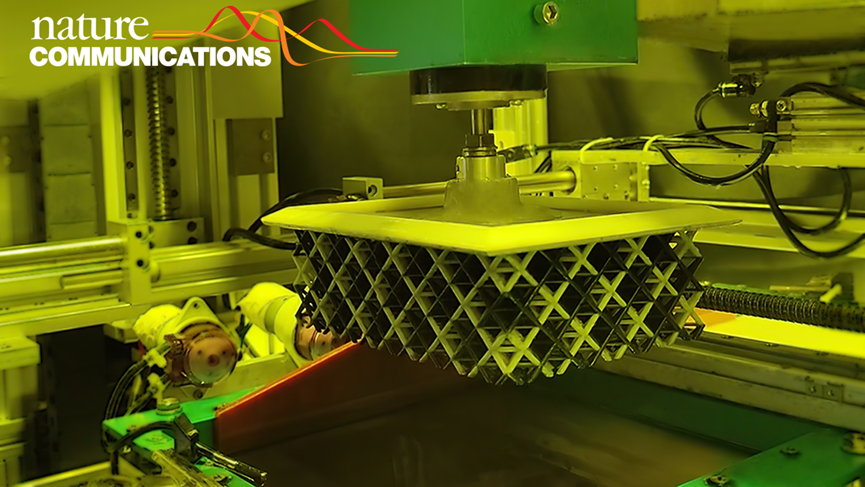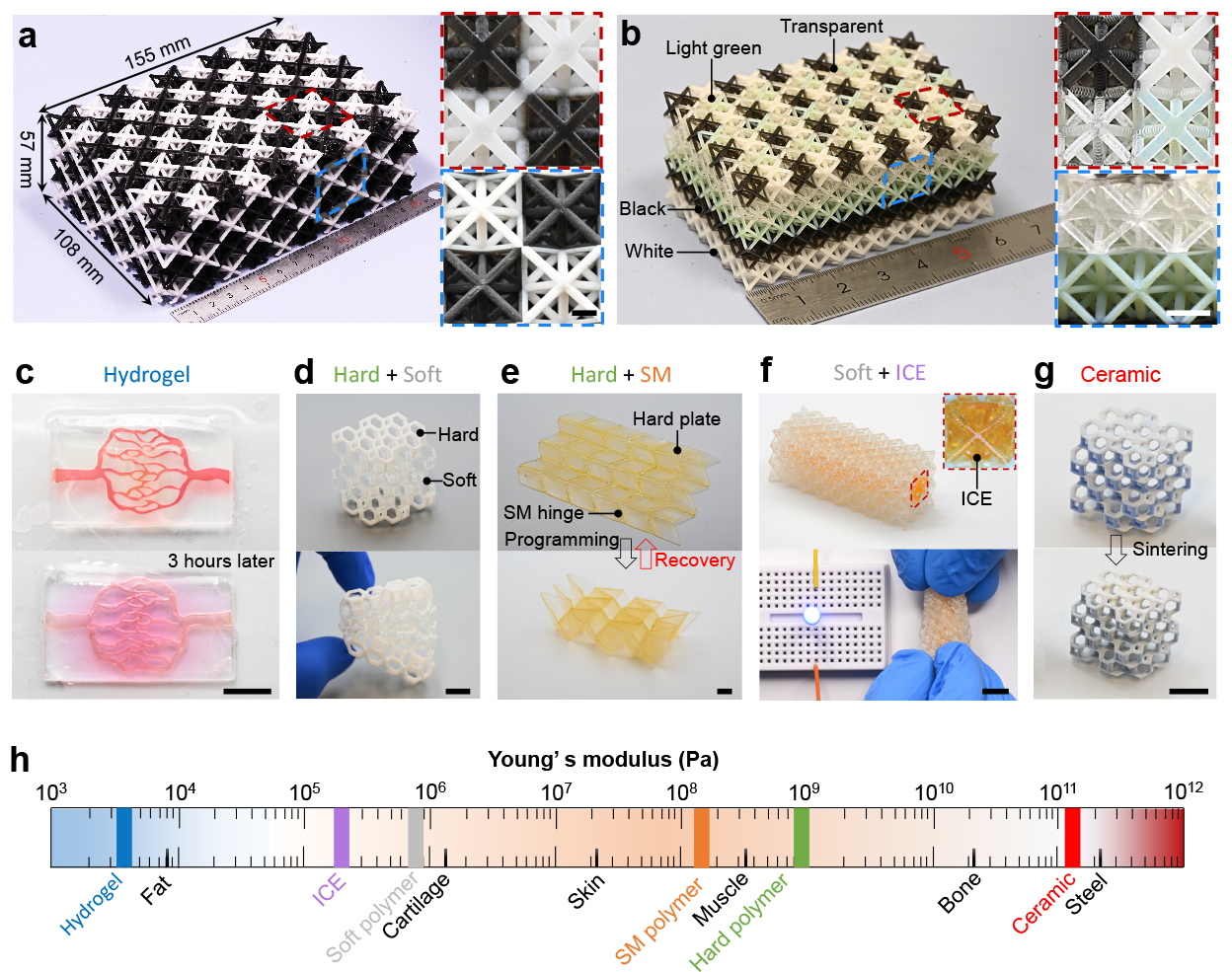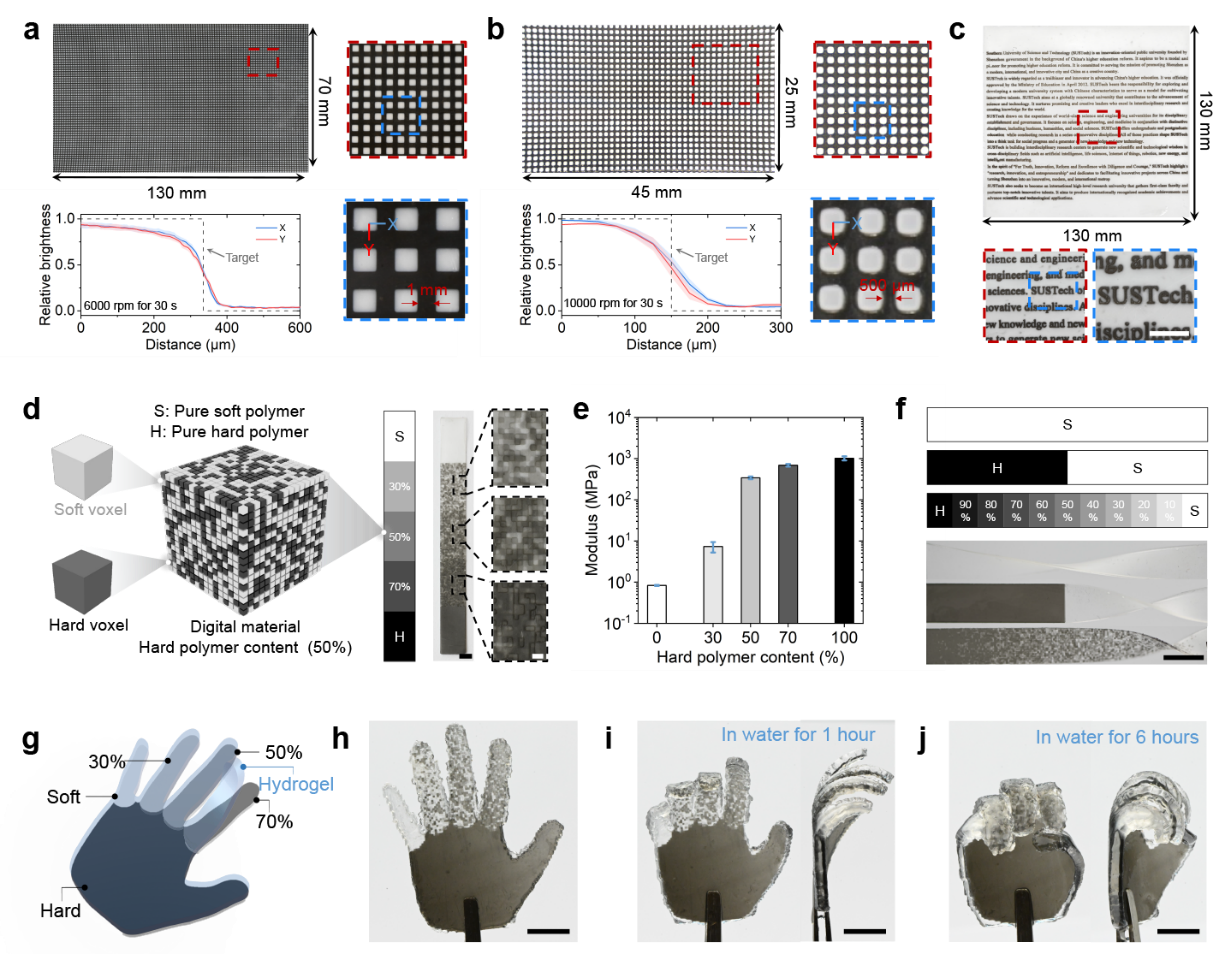There are growing demands for multimaterial three-dimensional (3D) printing to manufacture 3D objects where voxels with different properties and functions are precisely arranged. Digital light processing (DLP) is a high-resolution fast-speed 3D printing technology suitable for various materials. However, multimaterial 3D printing is challenging for DLP as the current multimaterial switching methods require direct contact onto the printed part to remove the residual resin.

Associate Professor Qi Ge’s research team from the Department of Mechanical and Energy Engineering at the Southern University of Science and Technology (SUSTech) has made substantial progress in the field of multimaterial 3D printing. The team reported a DLP-based centrifugal multimaterial (CM) 3D printing method to generate large-volume heterogeneous 3D objects where composition, property, and function are programmable at a voxel scale.
Their research results, entitled “Centrifugal multimaterial 3D printing of multifunctional heterogeneous objects,” have been published in Nature Communications, a multidisciplinary journal covering the natural sciences, including physics, chemistry, earth sciences, medicine, and biology.
As shown in Figure 1, the CM 3D printer can print heterogeneous 3D structures in a large area (up to 180 mm × 130 mm) made of materials ranging from hydrogels to functional polymers and even ceramics. The team’s CM 3D printing method exhibits the excellent capability of fabricating digital materials, soft robots, and ceramic devices. The Young’s modulus of the materials that are used in Fig. 1c–g spans in about seven orders of magnitude.

Figure 1. Heterogeneous 3D objects created by CM 3D printing system
Inspired by mammals who dry themselves through body-shaking (Fig. 2e), Prof. Ge’s team developed the CM 3D printing system that removes the residual resin during multimaterial switching by spinning the printed part with a high angular speed. The centrifugal force avoids direct contact with the printed parts during the process of removing residual resin so that the CM 3D printing system can print multimaterial structures with a much greater area and higher printing speed, and is compatible with a wide range of material resins whose viscosity ranging from 10−3 to 101 Pa·s.

Figure 2. Working principle of CM 3D printing system
As shown in Figure 3, to investigate the effect of spinning speed on the transition zoom between two materials, the researchers printed grid patterns consisting of orthogonal black lines and white squares. The maximum spinning speed can be increased to 10,000 rpm, reducing the transition zoom to about 100 μm, which is smaller than other multimaterial 3D printing techniques. The CM 3D printer also enables us to design and fabricate digital materials where the mechanical properties can be tuned by controlling the spatial distribution of the hard and soft voxels.

Figure 3. CM 3D printing of digital materials
The CM 3D printing system enables direct 3D printing of a soft pneumatic actuator (SPA) where the bending, pressure, and temperature sensors are seamlessly integrated (Fig. 4). The entire SPA could be fabricated in a single 3D printing with five different polymers including a stretchable elastomer, hard polymer, soft polymer, conductive hydrogel, and ICE.

Figure 4. CM 3D printing of soft actuator with multiple sensors
The CM 3D printing system also allowed the researchers to print heterogeneous 3D structures consisting of ceramic and polymer. To further demonstrate the impact of their approach to manufacturing engineering parts, they designed a ceramic bearing where there must be an empty space between the rollers and the inner/outer ring so that the bearing can rotate freely. To support these freestanding rollers, they designed and printed elastomer to fill the empty space. The sintering process removes the elastomer, so that the ball bearing could rotate freely without resistance.

Figure 5. CM 3D printing of ceramic-polymer structures
Jianxiang Cheng, a Ph.D. student in Assoc. Prof. Qi Ge’s research team, is the first author of this paper. Assoc. Prof. Qi Ge is the corresponding author, and SUSTech is the first and only corresponding unit.
This work was supported by the National Key Research and Development Program of China, National Natural Science Foundation of China (NSFC), and Science, Technology and Innovation Commission of Shenzhen Municipality.
Paper link: https://www.nature.com/articles/s41467-022-35622-6
To read all stories about SUSTech science, subscribe to the monthly SUSTech Newsletter.
Proofread ByAdrian Cremin, Yingying XIA
Photo By